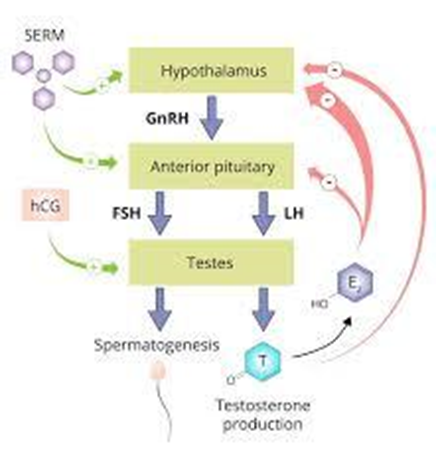Which of the following functions is associated with efferent neurons?
Carrying stimulus to the spinal cord and the brain from all other parts of the body
Conducting impulses from sensory neurons to motor neurons
Regulating neuron function
Carrying stimulus away from the brain and spinal cord
The Correct Answer is D
a. Carrying stimulus to the spinal cord and the brain from all other parts of the body: This is the function of afferent neurons, not efferent neurons.
b. Conducting impulses from sensory neurons to motor neurons: This describes interneurons, which relay signals between sensory and motor neurons.
c. Regulating neuron function: This is a vague description and doesn't specifically relate to the primary role of efferent neurons.
d. Carrying stimulus away from the brain and spinal cord: This correctly describes efferent neurons, which carry motor commands from the central nervous system to muscles and glands.
Nursing Test Bank
Naxlex Comprehensive Predictor Exams
Related Questions
Correct Answer is A
Explanation
a. Sebaceous: Sebaceous glands are located near hair follicles and produce sebum, an oily substance that lubricates the hair and skin, preventing dryness and keeping it supple.
b. Eccrine: Eccrine glands are sweat glands located throughout the skin and help regulate body temperature through sweating.
c. Ceruminous: Ceruminous glands are located in the ear canal and produce cerumen (earwax) which protects the inner ear from dust, debris, and insects.
d. Apocrine: Apocrine glands are sweat glands located in areas like the armpits and groin. They produce a thicker sweat that takes on an odor when broken down by bacteria.
Correct Answer is D
Explanation
a. Parathyroid: Parathyroid glands regulate calcium levels in the blood, not testosterone.
b. Posterior pituitary: The posterior pituitary gland stores and releases hormones produced in the hypothalamus, not testosterone.
c. Thyroid: The thyroid gland produces thyroid hormones, not testosterone.
d. Anterior pituitary: The anterior pituitary gland produces gonadotropin-releasing hormone (GnRH), which stimulates the testes to produce testosterone in males.

Whether you are a student looking to ace your exams or a practicing nurse seeking to enhance your expertise , our nursing education contents will empower you with the confidence and competence to make a difference in the lives of patients and become a respected leader in the healthcare field.
Visit Naxlex, invest in your future and unlock endless possibilities with our unparalleled nursing education contents today
Report Wrong Answer on the Current Question
Do you disagree with the answer? If yes, what is your expected answer? Explain.
Kindly be descriptive with the issue you are facing.
